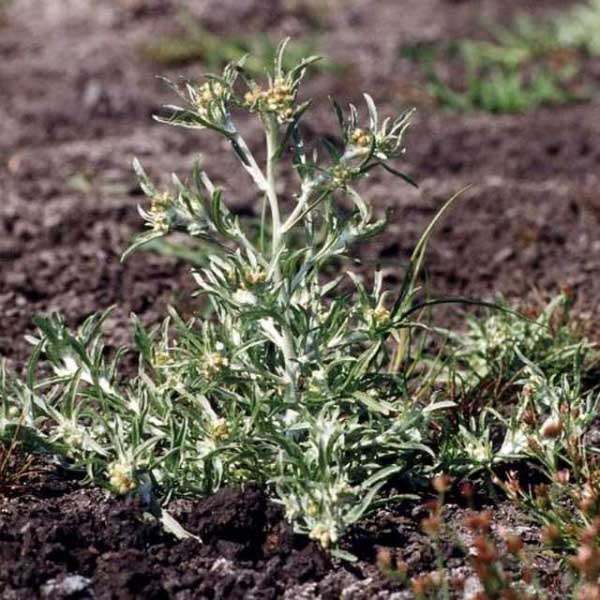Wira Wira - Gnaphalium graveolens

Common Names: Wira Wira, Huira-Huira, Life Herb, Always Alive, Rabbit Ears, Gnaphalium graveolens
Latin Name: Gnaphalium graveolens
Origin: Asia, Europe, South America
Short Introduction
When cultivating Wira Wira, altitude is a key factor. For optimal growth, the ideal range is 900–3600 meters above sea level, which can be challenging to achieve in certain regions. Otherwise, Wira Wira is not a demanding plant, displaying a high tolerance to environmental conditions. It prefers slightly humus-rich sites, partial shade, and well-drained soil; alpine greenhouses are a suitable option. Propagation can be done by division in the spring, with seeds covered by a thin layer of soil and germination taking about a month. The optimal temperature range is 12–20°C, and cuttings are best taken at the end of summer or the beginning of autumn.
Detailed Description
A natural antiviral herb with diverse uses in treating respiratory and other illnesses
Botanical Information
Wira Wira is a perennial herb growing to about 10–30 cm in height. Its color ranges from light amber to yellow, and its appearance resembles small mountain shrubs, typically occurring in clusters. The plant is densely branched, covered entirely with white, downy hairs, giving it a bushy look. The lower leaves are lanceolate, 1–5 cm long, while the upper leaves are linear. It produces numerous, mostly spherical flower heads arranged in dense clusters. The flowers are golden yellow and bloom throughout the summer.
Origin and Distribution
Wira Wira originates from the mountain slopes of the Andes in South America. Efforts to cultivate it under similar conditions are underway in the Caucasus, southeastern Europe, and western Asia, but it thrives best and yields are highest in its native South America.
Usage / Dosage
In traditional Peruvian medicine, Wira Wira is valued for its unique antiviral (specifically virostatic) effect. Used in equal parts with Muña-Muña, this combination is regarded as the most effective remedy in the treatment of viral diseases by local culture. In milder cases, each herb may be used individually. Decades of therapeutic use suggest that the active compounds not only combat viral infection but also help the body recover after illness, offering a protective effect likened to vaccination.
It is traditionally recommended to begin using Wira Wira at the onset of colds or viral infections, drinking it steadily for about a day and a half, which is believed to help resolve much of the infection. Folk healers report that relief can be observed after the very first cup in cases of acute symptoms. With the correct diagnosis, noticeable symptom improvement is frequently seen after three days of regular use, and some claim that all symptoms disappear after this period.
Natural and holistic in its action, Wira Wira is said to stimulate the immune response in a way similar to vaccination. Regular use over time may reduce sensitivity to a specific viral strain, lowering the risk of future illness from the same pathogen. After a year of consistent use, the incidence of illness is reported to decrease by half, after which the herb is taken only as needed.
Wira Wira is also recommended as a preventive remedy when a family member falls ill, and is beneficial for people in workplaces or schools where the risk of infection is high due to crowding. Additional sources indicate that it may act as an antihistamine and anti-asthmatic, helping to manage allergy symptoms and calm asthma, as well as exhibiting antispasmodic effects.
The herb’s constituents have demonstrated proven antioxidant activity, most clinically noticeable in cases of upper respiratory tract inflammation. Most notably, it offers relief from symptoms of the common cold, flu, rhinitis, coughs, catarrh of the upper respiratory tract, and tonsillitis. The active compounds—believed to be flavonoids and terpenes—show significant antimicrobial activity against bacteria such as Streptococcus pyogenes, Streptococcus pneumoniae, and Staphylococcus aureus, as well as certain viruses (including herpesvirus and Epstein-Barr virus), which are principal agents of tonsillitis.
Wira Wira was popularized for these and other health benefits by the Silesian missionary of Czech origin, Father Jaroslav Soukup, during his work in the Amazon. In folk medicine, it is traditionally recommended to help ease acute mild to moderate pain, often in tandem with other medicinal herbs. Other uses include reducing fever, swelling from lower or upper respiratory tract inflammation, and soothing coughs of various origins—whether wet, dry, or allergy-related. It is not recommended for children under 3 years old, nor for pregnant or breastfeeding women, due to a lack of safety information.
Active Compounds
Wira Wira contains a multitude of compounds, many of which remain unidentified and unquantified. Known constituents include alkaloids, anthraquinones, beta-sitosterols, labdane derivatives, mucilages, sterols, tannins, and triterpenes.
Traditional Dosage
As with Muña-Muña, the classic preparation recommends boiling 3–5 grams of dried herb in 1 liter of water for at least 5 minutes, then simmering gently. Strain the mixture and drink one glass of the cooled decoction three times a day. Another source recommends using two heaping tablespoons of Wira Wira, either alone or with Muña-Muña, simmered in 1 liter of water for 10 minutes, which constitutes the daily dosage for one adult. The entire dose should be consumed throughout the day. Continue taking the herb throughout the illness, and after symptom relief, halve the dose for an additional 3–4 days. For chronic problems, the effect of Wira Wira may develop more slowly; it can be taken continuously for up to 3 weeks, followed by a break of at least 10 days.
